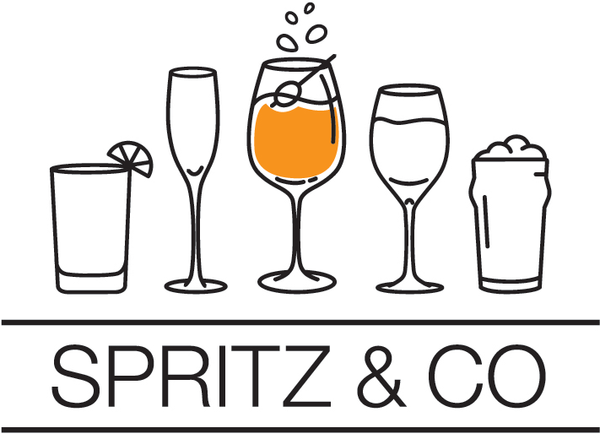MÜLLER-THURGAU
Müller-Thurgau is a variety of white grape (sp. Vitis vinifera) which was created by Hermann Müller from the Swiss Canton of Thurgau in 1882. It is used to make white wine in Germany, Austria, Northern Italy, England, in Australia, Czech Republic, New Zealand, United States and Japan. There are around 42,000 hectares (104,000 acres) cultivated world-wide,[citation needed] which makes Müller-Thurgau the most widely planted of the so-called "new breeds" of grape varieties created since the late 19th century. Although plantings have decreased significantly since the 1980s, as of 2006 it was still Germany's second most planted variety at 14,000 hectares and 13.7% of the total vineyard surface.
In 2007, the 125th anniversary was celebrated at the Geisenheim Grape Breeding Institute. Müller-Thurgau is also known as Rivaner (Austria, Germany, Luxemburg, and especially for dry wines), Riesling x Sylvaner, Riesling-Sylvaner (Switzerland), Johannisberg (Wallis canton in Switzerland) and Rizlingszilváni (Hungary)
History
Most grapes have been created from a desire to harness qualities in two separate grapes and to generate a new vine that combines the qualities of both.
When Dr. Müller created the grape in the Geisenheim Grape Breeding Institute in the late 19th century, his intention was to combine the intensity and complexity of the Riesling grape with the ability to ripen earlier in the season that the Silvaner grape possesses.
Although the resulting grape did not entirely attain these two qualities, it nonetheless became widely planted across many of the German wine-producing regions.
By the 1970s, Müller-Thurgau had become Germany's most-planted grape. A possible reason for the popularity of this varietal is that it is capable of being grown in a relatively wide range of climates and soil types. Many of these vines were planted on flat areas that were not particularly suitable for growing other wine grapes because it was more profitable than sugar beet, which was the main alternative crop in those locations. The vines mature early and bring large yield quantities, and are less demanding as to planting site than for example Riesling. Müller-Thurgau wines are mild due to low acidic content, but nevertheless fruity. The wines may be drunk while relatively young, and with few exceptions are not considered to improve with age. These facts meant that Müller-Thurgau provided an economical way to cheaply produce large amounts of medium sweet German wines, such as Liebfraumilch and Piesporter, which were quite popular up until the 1980s.
The turning point in Müller-Thurgau's growth however was the winter of 1979, when on 1 January there was a sharp fall in temperatures, to 20 °F (-7 °C) in many areas, which devastated most of the new varieties, but did not affect the varieties such as Riesling which have much more hardy stems, after hundreds of years of selection. In the decades since then, the winemakers have begun to grow a wider variety of vines, and Müller-Thurgau is now less widely planted in Germany than Riesling, although still significant in that country and world-wide.
While the total German plantations of Müller-Thurgau are declining, the variety is still in third place among new plantations in Germany, after Riesling and Pinot Noir, with around 8% of all new plantations in the years 2006-2008
Wine regions
Follows, by region, a list of all DOC is allowed where the use of this vine.
Valle d'Aosta
- Vallée d'Aoste: 90% to 100% (marked "Muller Thurgau")
Alto Adige
- Alto Adige: 95% to 100% (marked "Muller Thurgau"), 0% ÷ 25% (in versions of "White" and "liabilities"), 90% to 100% (in the versions "Terlano", "Valle Isarco" and "Val Venosta" with the mention of the grape), 0% to 50% (in the "Terlano White")
Trentino
- Trentino: 85% to 100% (marked "Muller Thurgau"), 0% to 100% (in the "Sorni White")
- Valdadige: 0% to 20% (in the "Valdadige White")
Friuli Venezia Giulia
- Collio and Collio Gorizia: 0% to 20% (in the "White"), 100% (marked "Muller Thurgau")
- Friuli Aquileia: 90% to 100% (marked "Muller Thurgau")
Sicily
- Alcamo: 0% to 40% (in versions of "White", "Sparkling White" and "Late Harvest"), 85% to 100% (marked "Muller Thurgau")
- Contessa Entellina: 0% to 50% (in the "White")
- Delia Nivolelli: 85% to 100% (marked "Muller Thurgau")
Viticulture and winemaking
The leaf is medium size, pentagonal and five-lobed, small cluster, cylindrical-pyramidal, compact, with an average wing well developed, medium berry, ellipsoidal with thin skin of pale greenish yellow. He has considerable vigor, early maturation and prefers hilly terrain, sunny and breezy. Its abundant production requires the need of often pruning. Tolerates powdery mildew and downy mildew, can be attacked by botrytis, but it is resistant to winter frost and spring frosts. The variety is widespread in Europe, particularly Germany, Switzerland, Italy, and it has been highly successful in New Zealand.
← GO BACK TO GRAPE VARIETIES
